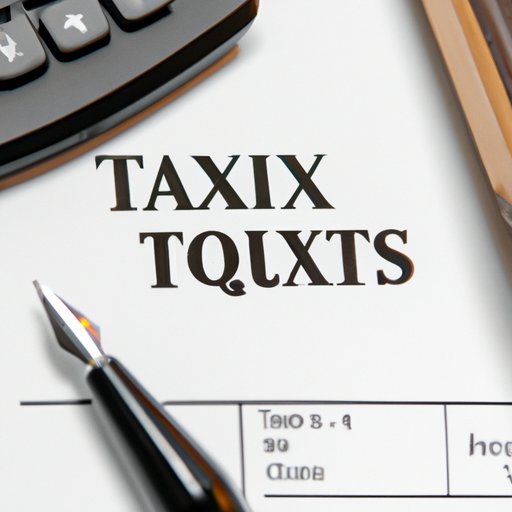
Introduction
As a self-employed individual or small business owner, it’s important to understand the concept of quarterly taxes. Quarterly taxes, also known as estimated taxes, are payments made to the IRS every three months to cover your tax liability for the year. In this article, we’ll walk you through everything you need to know about how to pay quarterly taxes.
Guide to Estimated Quarterly Tax Payments: Everything you Need to Know
Estimated quarterly tax payments are the payments made by individuals or corporations on an installment plan basis to prepay income and self-employment taxes. These payments cover income tax, self-employment tax, and any other taxes you may owe to the IRS. If you are self-employed or own a business, you are required to pay estimated quarterly taxes.
Estimated quarterly taxes are due four times a year – on April 15, June 15, September 15, and January 15 of the following year.
You can use a tax calculator or Form 1040-ES from the IRS to calculate your estimated quarterly tax payments.
If you fail to pay estimated quarterly taxes, you may incur a penalty for underpayment. The amount of the penalty depends on how much you owe and how much you have already paid.
A Beginner’s Guide to Paying Quarterly Taxes: Understanding the Basics
Quarterly taxes refer to four estimated tax payments that self-employed individuals and small business owners must make to pay their income tax, self-employment tax, and other taxes throughout the year.
You must pay quarterly taxes if you expect to owe at least $1,000 in tax liability for the year. You may also need to pay quarterly taxes if you received income that was not subject to withholding, such as rental income or capital gains.
You can use Form 1040-ES to determine your estimated quarterly tax payments.
Once you have calculated your estimated quarterly taxes, you can make your payments using IRS Direct Pay, EFTPS, or by mailing a check to the IRS. You can also use tax software or hire a tax professional to help you make your estimated quarterly tax payments.
5 Steps to Budget for and Make Quarterly Tax Payments without Stress
Here are five steps for budgeting and making your quarterly tax payments without stress:
- Determine how much you owe for each quarter
- Schedule your payments in advance
- Consider setting up automatic payments
- Stay organized by keeping track of your income and expenses
- Work with a tax professional or use tax software to help you make your payments on time
By following these steps, you can avoid common mistakes and easily stay on top of your quarterly tax payments.
Tips for Managing Quarterly Tax Payments: Make it Easy to Stay on Track
To stay organized and keep track of your payments, you can:
- Create a separate bank account for your business income and expenses
- Keep track of your income and expenses using accounting software
- Set reminders for payment due dates
- Adjust your payments if your income changes
If your income is uneven, you may be able to use the annualized installment method to calculate your quarterly tax payments. This method takes into account fluctuations in income throughout the year.
Quarter by quarter making Estimated Tax Payments: How to Simplify the Process
The best way to stay organized is to break down your estimated quarterly tax payments into smaller, more manageable payments. Some tips for simplifying the process include:
- Set up automatic payments
- Break down your annual tax liability into quarterly payments
- Keep track of your payments throughout the year
You can also make estimated tax payments online using IRS Direct Pay.
Take Control of Quarterly Estimated Taxes: Strategies for Small Business Owners
Small business owners can take control of their quarterly tax payments by:
- Understanding tax deductions and credits available to their business
- Keeping accurate records of income and expenses
- Working with an accountant or tax professional to help them stay on top of their payments
- Staying up-to-date on tax law changes that may affect their business
By following these strategies, small business owners can minimize their tax liability and avoid penalties for underpayment of estimated quarterly taxes.
Conclusion
Quarterly taxes may seem daunting, but by understanding the basics and planning ahead, you can simplify the process and avoid costly penalties. Remember to keep track of your income and expenses, make your payments on time, and work with a tax professional if you need help. By taking control of your quarterly tax payments, you can stay on top of your finances and focus on the success of your business.





